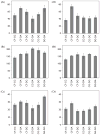A neurophysiological study into the foundations of tonal harmony
- PMID: 19444945
- PMCID: PMC5891320
- DOI: 10.1097/wnr.0b013e32831ddebf
A neurophysiological study into the foundations of tonal harmony
Abstract
Our findings provide magnetoencephalographic evidence that the mismatch-negativity response to two-note chords (dyads) is modulated by a combination of abstract cognitive differences and lower-level differences in the auditory signal. Participants were presented with series of simple-ratio sinusoidal dyads (perfect fourths and perfect fifths) in which the difference between the standard and deviant dyad exhibited an interval change, a shift in pitch space, or both. In addition, the standard-deviant pair of dyads either shared one note or both notes were changed. Only the condition that featured both abstract changes (interval change and pitch-space shift) and two novel notes showed a significantly larger magnetoencephalographic mismatch-negativity response than the other conditions in the right hemisphere. Implications for music and language processing are discussed.
Figures



References
-
- Krumhansl CL. Cognitive foundation of musical pitch. Oxford: Oxford University Press; 1990.
-
- Krumhansl CL. The cognition of tonality – as we know it today. J New Music Res. 2005;33:253–268.
-
- Sams M, Paavilainen P, Alho K, Naatanen R. Auditory frequency discrimination and event-related potentials. Electroencephalogr Clin Neurophysiol. 1985;62:437–448. - PubMed
-
- Tervaniemi M, Kujala A, Alho K, Virtanen J, Ilmoniemi RJ, Näätänen R. Functional specialization of the human auditory cortex in processing phonetic and musical sounds: a magnetoencephalographic (MEG) study. Neuroimage. 1999;9:330–336. - PubMed
-
- Zatorre RJ, Belin P, Penhune V. Structure and function of auditory cortex: music and speech. Trends Cogn Sci. 2002;6:37–46. - PubMed
Publication types
MeSH terms
Grants and funding
LinkOut - more resources
Full Text Sources

